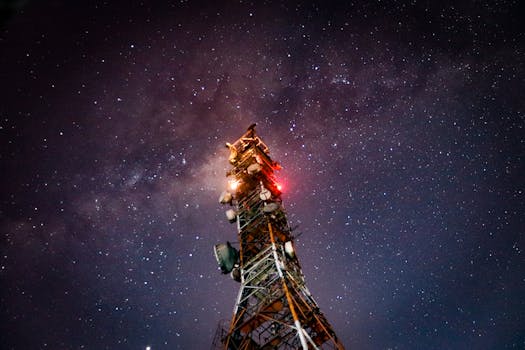
LEO Satellites: Revolutionizing Global Connectivity with Low Earth Orbit Technology
LEO satellites, or Low Earth Orbit satellites, are a type of satellite that operates at an altitude of around 160 to 2,000 kilometers above the Earth’s surface. This relatively low orbit allows LEO satellites to offer several advantages over traditional geostationary satellites, including faster data transfer rates, lower latency, and more reliable connections. In this article, we will explore the benefits and applications of LEO satellites and how they are revolutionizing global connectivity.
LEO satellites have been around for several decades, but recent advances in technology have made them more accessible and affordable. One of the main advantages of LEO satellites is their ability to provide high-speed internet access to remote and underserved areas. Traditional satellite internet services often rely on geostationary satellites, which can result in slower data transfer rates and higher latency due to the longer distance the signal has to travel. LEO satellites, on the other hand, can offer speeds of up to 1 Gbps and latency as low as 20 ms, making them ideal for applications that require fast and reliable connections.
Applications of LEO Satellites
LEO satellites have a wide range of applications, from providing internet access to remote communities to supporting critical infrastructure such as emergency response services and maritime communications. Some of the key applications of LEO satellites include:
Providing broadband internet access to underserved areas, such as rural communities and developing countries. LEO satellites can offer a cost-effective and reliable solution for connecting these areas to the global internet.
Supporting IoT (Internet of Things) applications, such as smart cities, industrial automation, and agriculture. LEO satellites can provide the necessary connectivity for IoT devices to transmit data in real-time, enabling more efficient and automated operations.
Enabling emergency response services, such as search and rescue operations and disaster relief efforts. LEO satellites can provide critical communications infrastructure in areas where traditional networks are damaged or destroyed.
Benefits of LEO Satellites
LEO satellites offer several benefits over traditional satellite technology, including:
Faster data transfer rates: LEO satellites can offer speeds of up to 1 Gbps, making them ideal for applications that require fast and reliable connections.
Lower latency: LEO satellites can offer latency as low as 20 ms, making them suitable for real-time applications such as video conferencing and online gaming.
Improved reliability: LEO satellites are less prone to interference and signal loss due to their lower orbit and more direct signal path.
Cost-effectiveness: LEO satellites can be more cost-effective than traditional satellite technology, especially for applications that require high-speed internet access.
Challenges and Future Directions
While LEO satellites offer several advantages, there are also some challenges and limitations to consider. One of the main challenges is the need for a large constellation of satellites to provide global coverage, which can be costly and complex to deploy and manage. Additionally, LEO satellites are subject to regulatory frameworks and international agreements that govern the use of satellite technology.
Despite these challenges, the future of LEO satellites looks promising. Several companies, such as SpaceX and Amazon, are investing heavily in LEO satellite technology, with plans to launch thousands of satellites in the coming years. These constellations will enable a wide range of applications, from broadband internet access to IoT and 5G connectivity.




